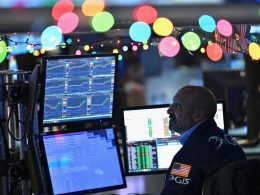In the intricate web of global finance, the Forex (foreign exchange) market stands as a pulsating hub where currencies dance to the tune of geopolitical shifts, economic fluctuations, and market sentiments. Amidst the rapid movements and volatility, traders often seek solace in long-term trends and predictions, attempting to decipher the future of currency pairs and navigate the tempestuous Forex futures market.
Understanding the Terrain
Long-term trends in Forex involve analyzing charts, economic indicators, and geopolitical developments to identify sustained movements in currency pairs over extended periods. Contrary to short-term trading, which thrives on rapid fluctuations and technical analysis, long-term trend prediction focuses on fundamental factors and macroeconomic trends.
Seasoned traders often leverage a combination of tools and methodologies, including technical analysis indicators like moving averages, Relative Strength Index (RSI), and Bollinger Bands, along with fundamental analysis encompassing interest rate differentials, GDP growth, inflation rates, and geopolitical events impacting global economies.
Navigating Long-Term Predictions

Predicting long-term trends in Forex requires a nuanced understanding of the global economic landscape. Here are some approaches adopted by experts:
- Fundamental Analysis: Delving into economic indicators, monetary policies, and geopolitical events influencing a country’s economy aids in forecasting currency movements. For instance, a country with strong economic growth and stable political conditions is likely to have a strengthening currency.
- Technical Analysis: Despite the focus on fundamentals, technical analysis tools remain invaluable. Chart patterns, moving averages, and other technical indicators can provide insights into long-term trends.
- Sentiment Analysis: Gauging market sentiment through tools like the Commitment of Traders (COT) report helps understand the positioning of large traders, providing hints about potential long-term trends.
- Correlation Analysis: Examining relationships between different currency pairs, commodities, and other asset classes assists in predicting long-term movements. For instance, the inverse correlation between the USD and gold often influences traders’ decisions.
Challenges and Risks
While long-term trend prediction offers potential rewards, it’s not without risks:
- Unforeseen Events: Geopolitical crises, unexpected policy changes, or natural disasters can disrupt even the most meticulous predictions.
- Market Volatility: Long-term predictions might face hurdles due to short-term volatility and speculative trading.
- Overreliance on Models: Blindly following predictive models without considering real-time market changes can lead to substantial losses.
Ethical Considerations
In the pursuit of accurate reporting on Forex futures, journalists must prioritize ethical standards. Objectivity, fact-checking, and providing a balanced perspective are crucial when discussing predictions and trends. Moreover, highlighting the risks associated with trading and advocating for responsible investment practices is essential.
In conclusion, navigating long-term trends and predictions in Forex futures demands a blend of analytical skills, a deep understanding of global economics, and an appreciation for the unpredictable nature of financial markets. Traders and investors alike tread cautiously through this labyrinth, seeking to decode the future while being mindful of the risks inherent in their pursuits.











